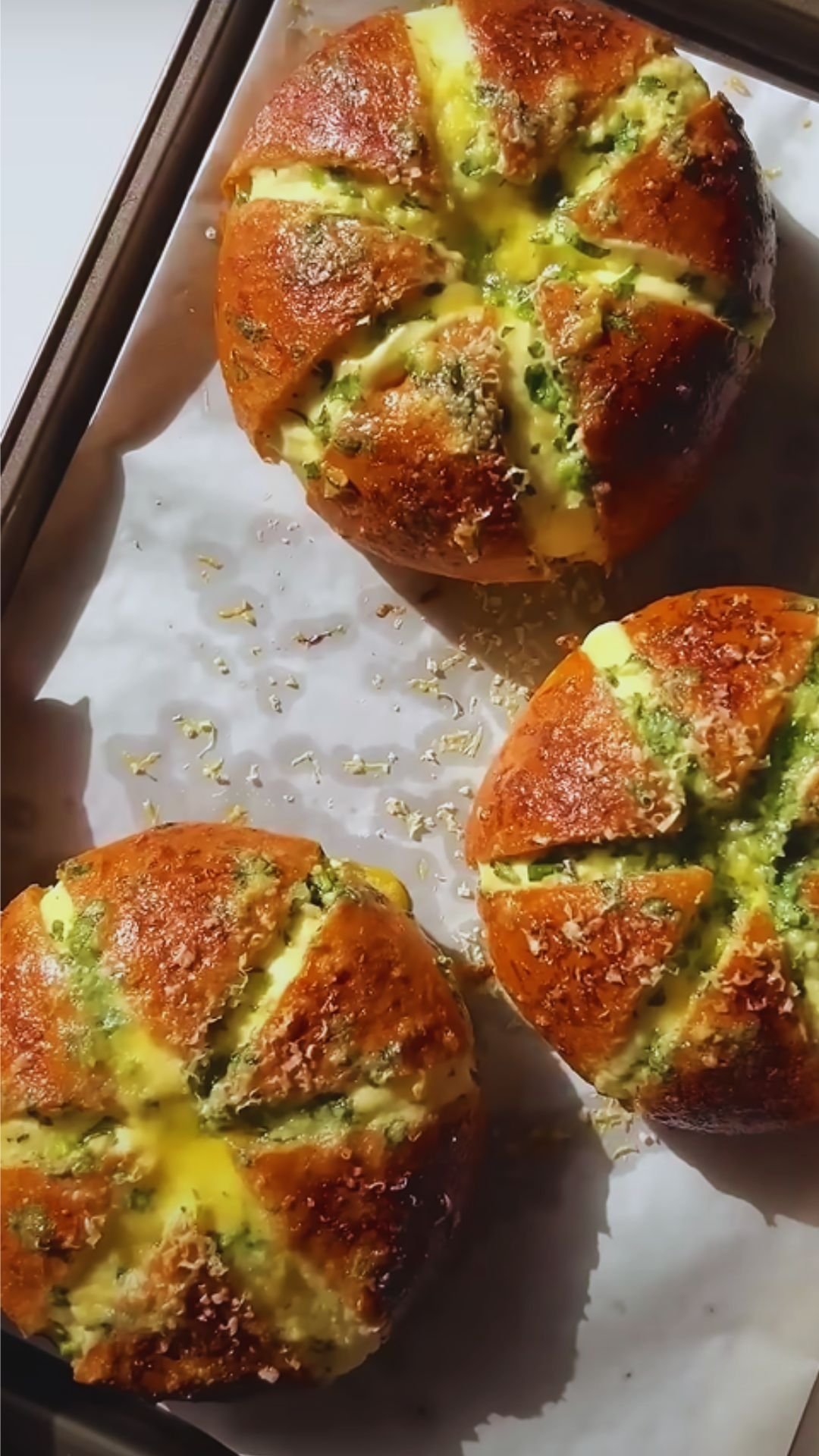There’s something magical about the aroma of freshly baked dinner rolls wafting through the kitchen. I’ve spent years perfecting what my family now calls “Unbelievable Rolls” – a recipe that consistently produces the most tender, cloud-like rolls that practically melt in your mouth. Today, I’m sharing all my hard-earned secrets so you can bring this bread basket showstopper to your own table.
The Search for Perfection
My journey to creating these unbelievable rolls began when I was a novice baker, struggling with dense, hockey-puck dinner rolls that left much to be desired. After countless batches (and some memorable failures), I discovered that creating truly exceptional dinner rolls isn’t just about following ingredients and measurements – it’s about understanding the science and techniques that transform simple ingredients into something extraordinary.
What makes these rolls truly “unbelievable” is their perfect balance of textures: a pillowy-soft interior with stretchy, delicate strands that pull apart, encased in a thin, golden-brown crust that adds just enough contrast. They’re rich without being heavy, with a buttery flavor that complements any meal without overwhelming it.
The Science Behind Perfect Rolls
Before diving into the recipe, let’s understand what makes dinner rolls succeed or fail:
Gluten Development: The stretchy protein network that gives bread its structure
- Too little: Rolls collapse and become dense
- Too much: Tough, chewy rolls that fight back when you bite them
- Just right: Delicate structure that holds air bubbles but remains tender
Fermentation: The yeast activity that creates flavor and texture
- Underdeveloped: Bland flavor, dense texture
- Overdeveloped: Sour, over-risen rolls that collapse
- Perfect: Complex, slightly sweet flavor with maximum tenderness
Fat Distribution: How butter or other fats integrate into the dough
- Poor distribution: Uneven texture and inconsistent flavor
- Optimal distribution: Melt-in-your-mouth tenderness and rich flavor in every bite
The Unbelievable Rolls Recipe
Ingredients
| Ingredient | Volume Measurement | Weight Measurement | Purpose |
|---|---|---|---|
| Bread Flour | 3 cups | 380g | Structure and chew |
| All-Purpose Flour | 1 cup | 125g | Tenderness |
| Instant Yeast | 2¼ teaspoons | 7g | Leavening |
| Granulated Sugar | ¼ cup | 50g | Flavor, food for yeast, browning |
| Salt | 1½ teaspoons | 9g | Flavor enhancement, controls fermentation |
| Whole Milk | 1 cup | 240ml | Tenderness, richness |
| Water | ¼ cup | 60ml | Hydration |
| Unsalted Butter (for dough) | ¼ cup (½ stick) | 57g | Richness, tenderness |
| Large Eggs | 2 | 100g | Structure, richness, color |
| Unsalted Butter (for brushing) | 4 tablespoons (½ stick) | 57g | Flavor, glossy finish |
| Flaky Sea Salt (optional) | 1 teaspoon | 5g | Flavor boost, visual appeal |
Equipment Needed
- Stand mixer with dough hook (or strong arms for hand kneading)
- Large mixing bowl
- Digital kitchen scale (highly recommended)
- 9×13-inch baking pan
- Pastry brush
- Clean kitchen towel
- Instant-read thermometer (optional but helpful)
- Bench scraper
- Parchment paper
Step-by-Step Process
- Prepare the Tangzhong (Secret Ingredient)
- Combine 3 tablespoons of bread flour with ½ cup of water in a small saucepan
- Cook over medium heat, whisking constantly until mixture thickens to a paste (about 1-2 minutes)
- Transfer to a bowl and let cool to room temperature
- Mix the Dough
- In your stand mixer bowl, combine both flours, yeast, sugar, and salt
- Warm milk and water to about 110°F (43°C) – should feel warm but not hot to the touch
- Add cooled tangzhong, warm milk mixture, eggs, and 4 tablespoons of softened butter to the dry ingredients
- Mix with the dough hook on low speed until ingredients are combined (about 2 minutes)
- Increase to medium speed and knead for 8-10 minutes until dough passes the “windowpane test”
- First Rise
- Transfer dough to a lightly greased bowl
- Cover with plastic wrap or a damp kitchen towel
- Let rise in a warm spot (75-78°F is ideal) until doubled in size (about 1-1.5 hours)
- Shape the Rolls
- Gently deflate the dough and turn out onto a lightly floured surface
- Divide the dough into 15 equal pieces (about 65g each if using a scale)
- Shape each piece into a tight ball by pulling the edges toward the center and pinching to seal
- Place seam-side down in a greased 9×13-inch baking pan, arranged in 5 rows of 3
- Second Rise
- Cover pan loosely with plastic wrap or a damp towel
- Let rolls rise until puffy and touching each other (about 45-60 minutes)
- Preheat oven to 375°F (190°C) during the last 20 minutes of rising
- Bake to Perfection
- Brush rolls gently with 2 tablespoons of melted butter
- Sprinkle with flaky sea salt if desired
- Bake for 20-25 minutes, rotating pan halfway through, until deep golden brown (internal temperature should reach 190°F/88°C)
- Brush immediately with remaining 2 tablespoons of melted butter when rolls come out of the oven
- Cool and Serve
- Let rolls cool in the pan for 5 minutes
- Transfer to a wire rack if not serving immediately
- Best served warm, but delicious at room temperature too

Troubleshooting Guide: Common Issues and Solutions
| Problem | Possible Cause | Solution |
|---|---|---|
| Dense, heavy rolls | Underproofed dough | Allow more time for rising; ensure warm environment |
| Rolls too dark on bottom | Oven too hot or pan too close to bottom | Use light-colored pan; move rack position higher |
| Uneven sizes | Inconsistent portioning | Use a scale to weigh dough portions |
| Dry texture | Overbaking or too much flour | Reduce baking time; measure flour by weight |
| Rolls stick to pan | Insufficient greasing | Thoroughly grease pan or use parchment paper |
| Bland flavor | Not enough salt or butter | Double-check measurements; don’t reduce fat content |
| Rolls collapse after baking | Overproofed dough | Shorten second rise time; watch dough carefully |
| Doughy center | Underbaking | Increase bake time; use thermometer to check doneness |
| Tough texture | Too much kneading or excess flour | Knead just until windowpane test is passed; keep dough tacky |
Variations: Four Ways to Make These Rolls Your Own
Herb and Garlic Rolls
Fold in 2 tablespoons of finely chopped fresh herbs (rosemary, thyme, chives) and 2 minced garlic cloves during the mixing stage. Brush with herb-infused butter after baking.
Whole Wheat Version
Replace 1 cup of bread flour with whole wheat flour. Add 1 tablespoon of honey to balance the heartier flavor. Expect a slightly denser texture but more complex flavor profile.
Cheese-Stuffed Rolls
After dividing the dough, flatten each piece, place a cube of cheese (cheddar, gruyere, or mozzarella) in the center, then form the ball around it, ensuring it’s completely sealed.
Sweet Cinnamon-Sugar Rolls
Add 1 teaspoon of vanilla extract to the dough. After shaping rolls, roll each in a mixture of cinnamon and sugar before placing in the pan. Drizzle with simple glaze after baking.
Make-Ahead Tips for Busy Bakers
These rolls can fit into even the busiest schedule with these time-saving strategies:
- Overnight Refrigeration: Complete through shaping, then cover and refrigerate overnight. The next day, remove from refrigerator, let stand at room temperature for 1-2 hours until puffy, then bake as directed.
- Freezing Unbaked Rolls: After shaping, place rolls on a baking sheet and freeze until solid. Transfer to a freezer bag for storage up to 1 month. Thaw in the refrigerator overnight, then let rise at room temperature for 2 hours before baking.
- Freezing Baked Rolls: Cool completely, wrap tightly in foil, and freeze for up to 3 months. Thaw at room temperature and reheat wrapped in foil at 300°F for 15 minutes.
- Par-Baking Option: Bake rolls for just 15 minutes until set but not browned. Cool, wrap, and refrigerate for up to 2 days. Finish baking at 375°F for 7-10 minutes until golden.

Serving Suggestions: Perfect Pairings for Your Unbelievable Rolls
These versatile rolls complement nearly any meal, but here are some suggestions that showcase them perfectly:
For Weeknight Dinners
- Alongside hearty soups or stews to soak up every last drop of broth
- With roasted chicken and vegetables for a simple yet satisfying meal
- As sandwich buns for leftover meats or vegetable fillings
For Special Occasions
- As part of a holiday feast with roasted turkey or ham
- Accompanying a Sunday pot roast with gravy for dipping
- Serving with a special pasta dinner to add extra comfort
For Breakfast or Brunch
- Split and toasted with butter and jam
- As the base for mini breakfast sandwiches with eggs and cheese
- Toasted and topped with avocado and a sprinkle of everything bagel seasoning
Compound Butter Pairings
Create special butter blends to elevate your rolls even further:
| Compound Butter | Ingredients | Pairs Well With |
|---|---|---|
| Honey Butter | 1 stick butter + 2 tbsp honey + pinch of salt | Breakfast, brunch |
| Herb Butter | 1 stick butter + 2 tbsp mixed herbs + 1 clove minced garlic | Italian meals, roast chicken |
| Citrus Butter | 1 stick butter + 1 tbsp citrus zest + 1 tsp honey | Seafood dinners, spring meals |
| Maple Cinnamon | 1 stick butter + 1 tbsp maple syrup + ½ tsp cinnamon | Special breakfast, dessert |
The Role of Temperature in Perfect Rolls
Temperature control is one of the most underappreciated aspects of successful bread making:
- Ingredient Temperature: The combined temperature of your flour, water, and room should ideally give a final dough temperature of about 75-78°F for optimal yeast activity.
- Proofing Environment: If your kitchen is cold, create a warm environment by:
- Turning your oven light on (don’t turn on the oven)
- Placing a pan of hot water in the oven below the dough
- Using the “proof” setting if your oven has one
- Setting up near a warm appliance
- Water Temperature Adjustment: In summer, use cooler water (around 70°F). In winter, use warmer water (up to 110°F) to compensate for colder flour and room temperatures.
- Butter Consistency: Butter should be soft enough to incorporate easily without being melted. The ideal temperature is around 65-67°F – it should yield to gentle pressure but hold its shape.

Common Questions About Unbelievable Rolls
Q: Can I make these without a stand mixer? Yes! Hand-kneading works perfectly fine but requires more time and effort. Mix ingredients with a wooden spoon until combined, then turn onto a lightly floured surface and knead for about 10-12 minutes until the dough becomes smooth and elastic.
Q: Why is my dough too sticky to work with? Bread dough should be slightly tacky but not overly sticky. If it’s sticking excessively to your hands, add flour 1 tablespoon at a time while kneading. However, be careful not to add too much, as this can lead to dry rolls. The dough should clear the sides of the bowl but still stick slightly to the bottom.
Q: What’s the “windowpane test” and how do I know if my dough passes? The windowpane test determines if gluten has developed sufficiently. Take a small piece of dough and gently stretch it between your fingers. If it can stretch thin enough to become translucent without tearing (like a windowpane), the gluten is properly developed. If it tears easily, continue kneading.
Q: My rolls didn’t rise much. What went wrong? Several factors affect rising: yeast activity, temperature, and time. Make sure your yeast is fresh and that your rising environment is warm enough (75-78°F is ideal). If your kitchen is cold, rising will take longer. Also check that your liquid wasn’t too hot when added to the yeast, which can kill it.
Q: Can I substitute active dry yeast for instant yeast? Yes, but you’ll need to activate it first. Dissolve the active dry yeast in the warm milk and water with a pinch of the sugar, and let it sit for 5-10 minutes until foamy before adding to the dry ingredients. You may also need to increase the amount by about 25% (so use about 3 teaspoons instead of 2¼).
Q: What is tangzhong and why is it important? Tangzhong is a Japanese technique where a small portion of flour is cooked with liquid to create a paste. This pre-gelatinizes the starches, allowing them to absorb more liquid and resulting in exceptionally soft, moist rolls that stay fresh longer. It’s the secret to the “unbelievable” texture!
Q: How can I tell when my rolls are properly proofed before baking? Properly proofed rolls will be puffy and nearly doubled in size. When gently pressed with a finger, the dough should spring back slowly, leaving a slight indentation. If it springs back immediately, it needs more time. If it doesn’t spring back at all, it’s overproofed.
Q: Why are my rolls dense instead of fluffy? Dense rolls usually result from underproofing (not enough rising time), insufficient kneading (gluten not developed enough), or too much flour in the dough. Make sure to measure flour accurately, knead until the dough passes the windowpane test, and allow sufficient rising time.
Final Thoughts: The Joy of Bread Making
There’s something deeply satisfying about creating these unbelievable rolls from scratch. Beyond the incredible taste and texture, there’s the pride that comes from mastering a skill that connects us to thousands of years of human tradition. Bread making engages all our senses – the feel of the dough as it transforms in our hands, the yeasty aroma filling the kitchen, the visual delight of golden-brown rolls, and finally, the incomparable taste of warm, fresh bread.
I encourage you to approach this recipe with patience and attention. Each batch teaches you something new about the alchemy of flour, water, yeast, and heat. Your first attempt might not be perfect, but each subsequent batch will bring you closer to mastery. Soon you’ll be the one fielding compliments and requests for your “unbelievable” rolls at every gathering.
The true secret ingredient is the care and attention you put into each step. Happy baking!


